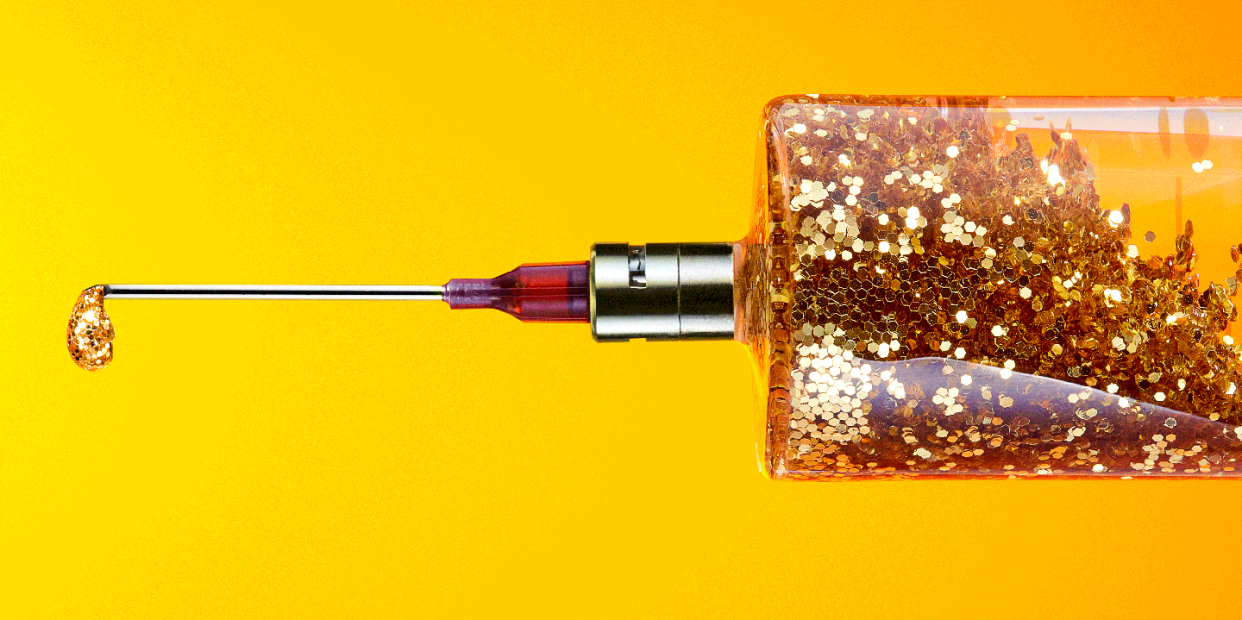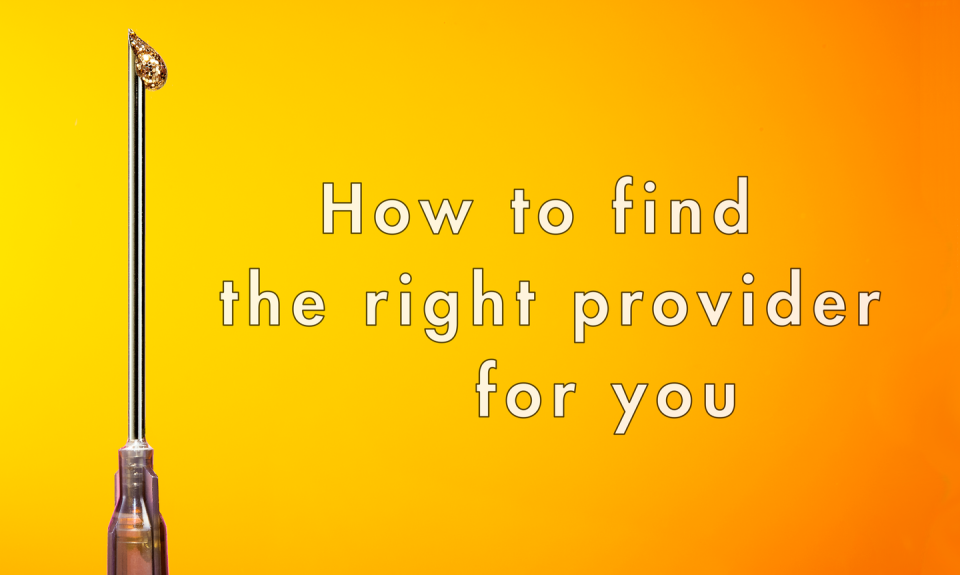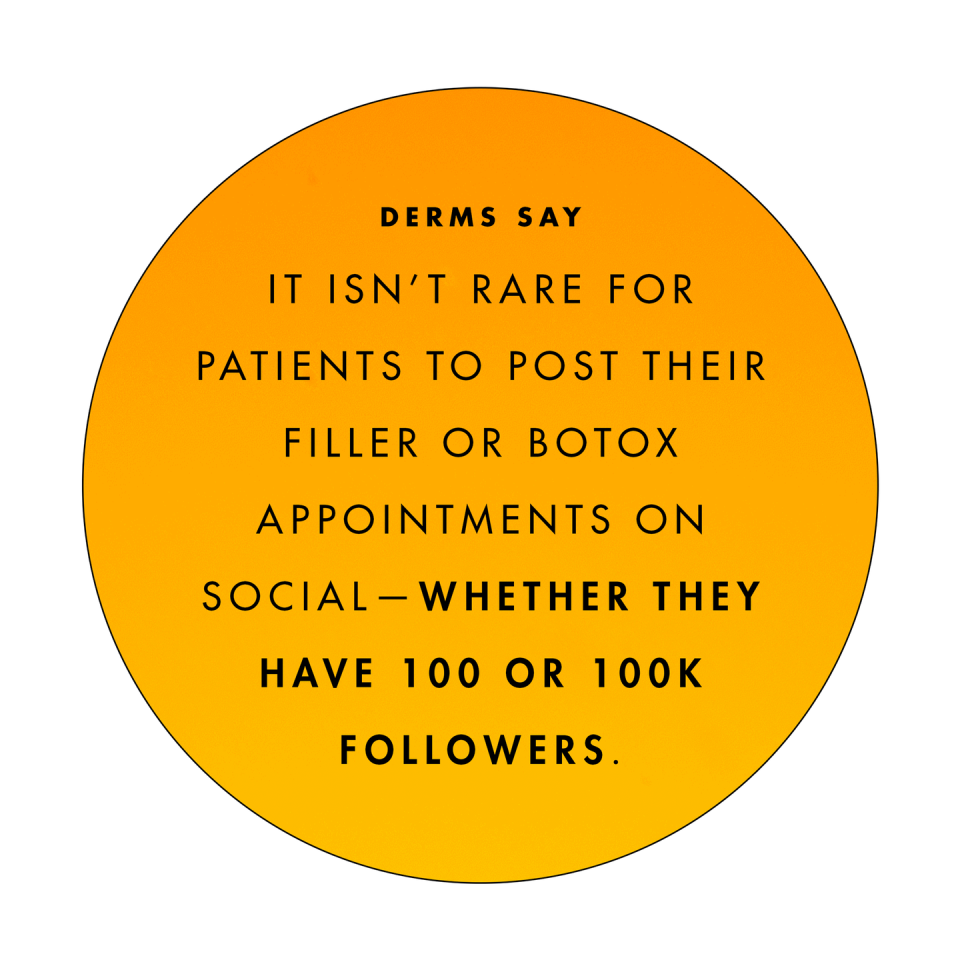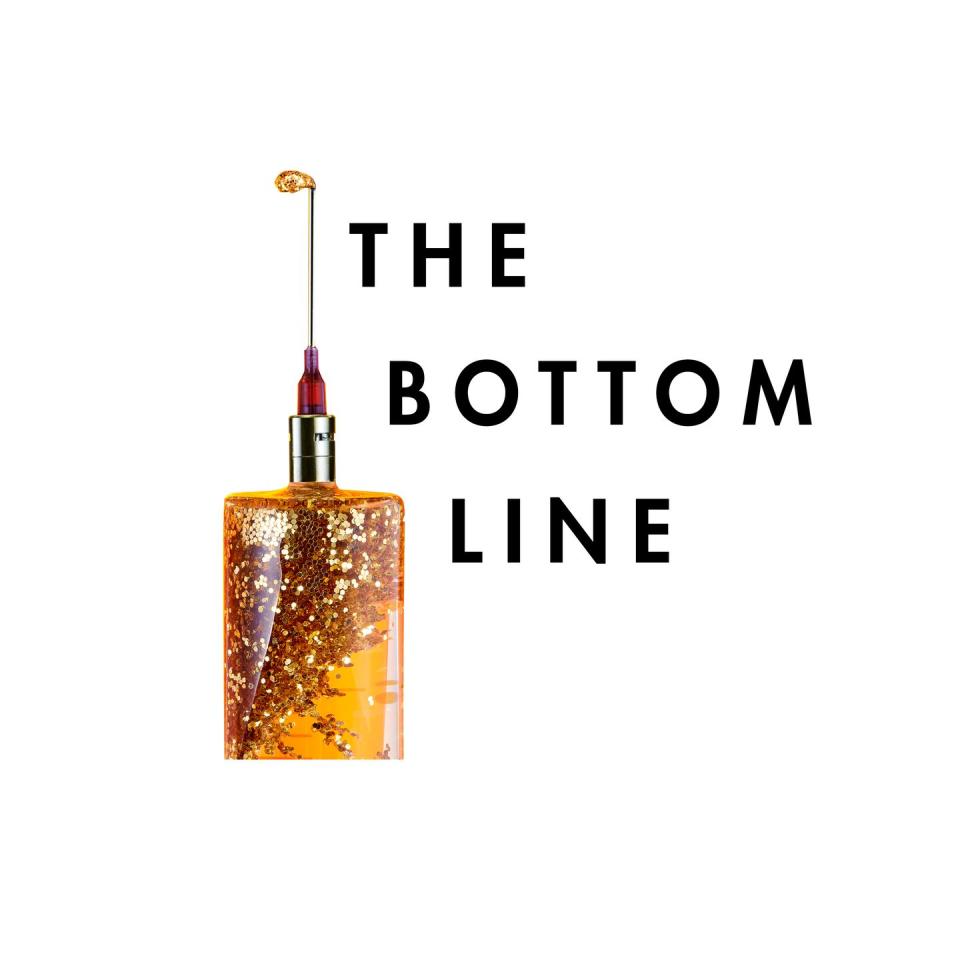The Newbie’s Guide to Getting Botox and Fillers and Not Regretting It

There’s no bigger, buzzier, more talked-about thing in beauty right now than injectables. And the numbers don’t lie: According to a new Cosmo poll, around one-third of you have already gotten fillers or Botox, and more than half of you are interested in trying them in the future.
TBH, I’m not surprised. In 2020 alone, facial injectables were a $13.4 billion (!) business. Some experts attribute this popularity to the pandemic and the infamous “Zoom effect,” which, okay, fine, it makes sense that we’d start thinking about every little line on our faces after staring at ourselves on screens for more than a year straight.
But also, unlike previous generations, millennials and Gen Zers have grown up around injectables. We see them via celebs and influencers, in marketing campaigns all over social media, and inside aesthetically pleasing shops (sup, Alchemy 43, Ject, and Peachy) that pop up in our neighborhoods. At this point, we’ve been so exposed to injectables for so long that they just feel…normal.
Still. Normal doesn’t equal necessary. And you can’t talk about how “everywhere” injectables are without asking the obvious: Do any of us really need them (or any face work, for that matter) at all? From my POV, everyone should answer that Q for themselves and weigh the risks and benefits personally. Because, hi, injectables are still a cosmetic procedure. Which, my friends, is exactly why I put together this guide.
TABLE OF CONTENTS
Injectables 101 / How to find the right provider for you / Myths to watch out for / Other genius uses for neurotoxins / The bottom line


Skip the Groupon spas and choose a board-certified dermatologist or plastic surgeon.

You’re putting a needle into your face—so even if that deal is super tempting, you want to see a legit pro instead, one who understands placement, facial anatomy, and dosage. Make sure your injector does these procedures on a regular, daily basis, says Melissa Kanchanapoomi Levin, MD, board-certified dermatologist and founder of Entière Dermatology. Bc keep in mind: The doctor who treats your acne may be board certified but have minimal experience with injections, which won’t do you any favors.
Make sure your provider shares your aesthetic vision.
Even if a derm knows how to inject, they may not vibe with your style (as in, if you aren’t into Kylie Jenner lips, you’ll want to see a derm who uses a light hand). This is where your internet stalking skills come in. Comb through your provider’s IG or website to get a sense of their look—it’s basically a portfolio of their work—and jot down what you do/don’t like. Also take a look at their staff’s faces, since derms usually treat them too, says Shereene Idriss, MD, board-certified dermatologist at Idriss Dermatology.

Don’t hold back in your consultation.
The whole point is to share your goals with your provider and make sure everyone’s on board before you get injected (your face is basically a walking advertisement for your derm, so the consult should really go both ways). Come with a list of questions and concerns, bring in photos (ideally a pic of yourself that you particularly love, since celeb references are only beneficial if you have a similar facial structure), and get super specific about your ideal end result.
Think it over and weigh your options.
You aren’t obligated to go through with your treatment if you aren’t ready. In NYC and most major cities, consults can cost up to $250 (they aren’t covered by insurance, FYI), and if you do move forward, that fee will serve as a credit toward your Botox or filler. But if anything feels off about your provider, Dendy Engelman, MD, board-certified dermatologic surgeon at Shafer Clinic Fifth Avenue, says it’s better to “thank them and go find someone you feel good about.”

It’s normal to be scared of the unknown—but some of the most common fears derms hear from patients are fueled by worst-case scenarios (ty, Botched). Let’s break down the biggest Botox and filler myths together.

Some of which are “off label,” aka not FDA approved, but still performed safely on the reg.
1. Lip flips: A teeny bit of neurotoxin is injected to relax the muscles above your lips, causing your upper lip to gently “flip out” for a fuller, poutier look.
2. Chronic migraines: Botox can help block them in some people when it’s injected into specific points around the face, head, and neck.
3. TMJ disorder and bruxism: By weakening the masseter muscle (which moves your jaw), Botox can help stop involuntary clenching and grinding.
4. Excessive sweating: An injection can block the nerves that activate your sweat glands in the armpits, hands, and feet when prescription antiperspirants aren’t enough.

If you decide you want to try injectables (again, personal decision, so you do you), pls don’t just make an appointment with the first person you find and wing it. As you now (hopefully!) know, there’s a TON to consider during the process—from choosing the right provider to understanding the potential risks—to make sure your experience goes smoothly (sry, had to).
You Might Also Like

